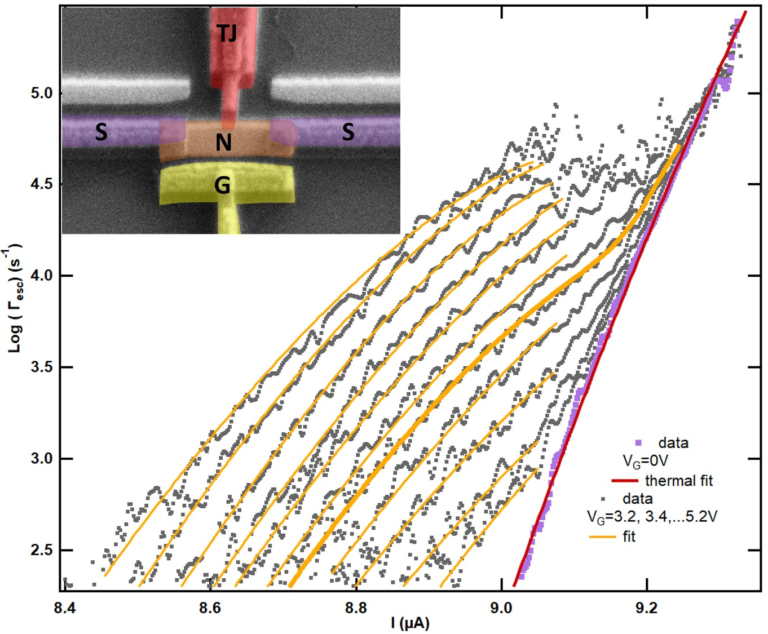A team of researchers from the Laboratoire de Physique des Solides (LPS) has demonstrated that in all-metallic Josephson field effect transistors, the statistics of electron flow due to the gate leakage current is imprinted onto the Josephson switching current and explains its reduction.
The recent and unexpected discovery that a gate electrode could modify a supercurrent in purely metallic systems has attracted a lot of attention in the condensed matter physics community both from the theoretical and experimental point of view. Typically, this effect is observed in Vanadium and Titanium nanowires, niobium superconducting constrictions or even superconductor-normal metal-superconductor (SNS) Josephson junctions. In all cases, the devices were characterized in terms of transistor switch efficiency for low consumption cryogenic electronics.
Beyond such practical applications, the understanding of the dynamics of quasiparticle excitations in a gated superconductor remains largely debated. In an article published in Physical Review Research, a team of researchers from LPS investigated the gate-induced reduction of the supercurrent in a dedicated nanoscale metallic Josephson junction containing a local probe of the electronic temperature. They demonstrated unambiguously that rare high energy electrons leak from the gate and trigger the supercurrent reduction, a scenario fully compatible with many previous studies. This finding was made possible by characterizing at very small temperature (100 mK) the gate-dependent switching histograms, a measure of the probability for a junction to switch from a superconducting state to a resistive state at a particular current bias. The team demonstrated that the statistics of electron flow caused by the gate leakage current was imprinted on the Josephson switching current while preserving a low electronic temperature. This work concludes years of intensely debated experimental findings and proposes a concise and verified scenario that ends a brief story opened in 2018.

Reference
Gate-assisted phase fluctuations in all-metallic Josephson junctions
J. Basset, O. Stanisavljević, M. Kuzmanović, J. Gabelli, C. H. L. Quay, J. Estève, and M. Aprili
Physical Review Research
doi: 10.1103/PhysRevResearch.3.043169
Contacts
Julien Basset
Marco Aprili
